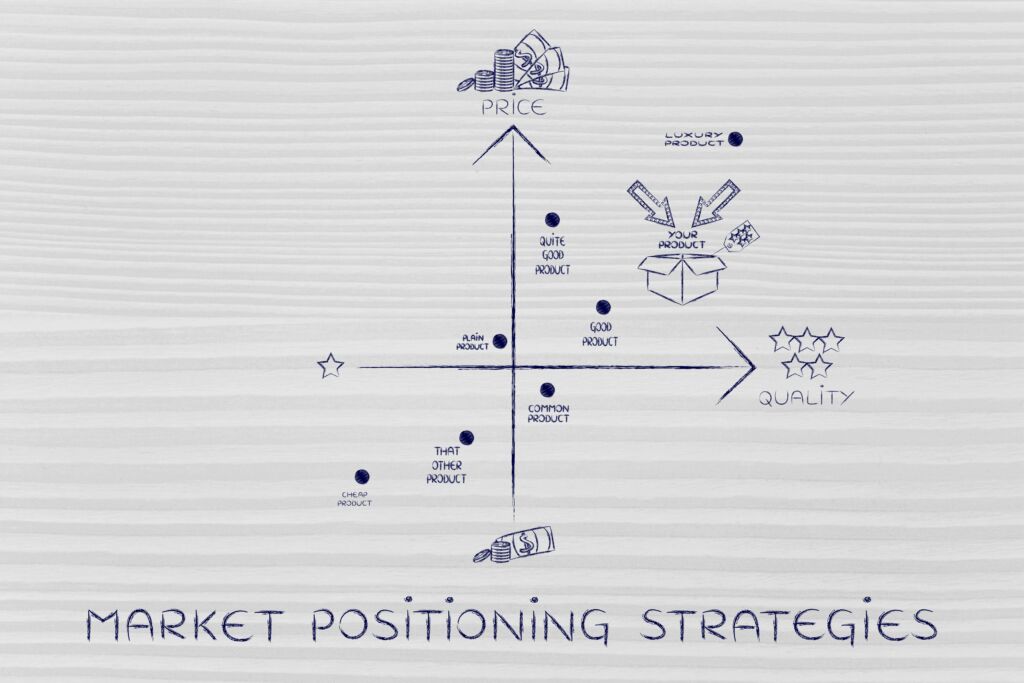Where is Your Sweet Spot on the Market?
The concept of positioning has been around since 1969, when Jack Trout and Al Ries mentioned it for the first time in their book “Positioning – The Battle for your Mind.” A lot has changed since then. The market has never been as dynamic as it is right now. And there is no end in sight, with virtual reality on the verge of going mainstream and 3D projected to experience double-digit growth worldwide until 2020. Needless to say, social media has an enormous impact on our decision-making process.
In some business sectors, companies face fierce or even cutthroat competition.
In the early 70’s, around 7000 radio stations broadcasted shows in the US. In the late 90’s this number increased to 13,000 in the US. According to the CIA World Factbook, the number has skyrocketed up to 44,000 worldwide. With the Internet, we not only have access to our local stations in our country, but also to a variety of stations in Spain, Australia, or South Africa, with more options to choose from.The variety of products, substitutes, and alternatives to choose from has grown exponentially, leaving customers overwhelmed. Imagine you could download the blueprint of an item and print it on your 3D printer, circumventing traditional sales channels.
In business-to-business these numbers might not be as drastic as in business-to-consumer markets. However, small business-to-business companies often still struggle with visibility on the market and compete against global players. The product or service appears to be indistinguishable to clients.
If you look at the literature, other definitions for positioning will come up too:
- Brand Positioning
- Market Positioning
- Psychological Market Modell
- Competitive Positioning
- Benefit Segmentation
- Mapping
- Preference Analysis
- Joint-Space-Analysis
- Differentiation
Positioning could be accomplished using a variety of dimensions:
- Highest quality
- Lowest price
- Exclusivity
- Best customer service
- Specific product feature
- Providing experiences
- Target groups
- Best guarantee
- Biggest portfolio
- Niche expertise
- Customized solutions
- Local hero vs. global presence
- Proven reliable solutions
Being everything to everyone, with no clear or discernable positioning, the company will become a jack-of-all-trades yet a master of none. When I work with clients in daily business, it seems hard for some to decide which strategic route to take. Deciding for one route would mean neglecting some clients for the sake of others. That’s a business mantra a lot of small sized companies follow. Of course, this decision will have an immediate effect on revenue and customer perception. However, we have to sacrifice short-term revenue for long-term success.

Positioning strategy in practice
Especially in small and midsized companies, it takes time to change this mindset. In my experience, I often see how prospective sales and potential revenue influence which strategy is pursued. Metaphorically speaking, we need to chop off some branches to provide enough nutrition for a tree’s roots. Communicating value has become a challenge.
A business travel solution provider recently argued that their competitors have almost the same website. A thorough analysis proved that they were right. Most of the competitors have a very similar positioning strategy. All of them have a global presence and have been on the market for more than 50 years.
Let’s take a closer look at how this positioning strategy is implemented using various codes, such as language (phrases, words, dialogues, sentence structure, technical terms, and similarity of claims), symbols (images, figures, protagonists, and items), or stories (life episodes, situations). We will see the smart business traveler, the handshake between two ambitious business partners, a meeting point at the airport, a rental car, a world map, a briefcase, or the connected digital world as a graphic. Obviously, the benefits they offer and the terms they use are very similar or even exchangeable. All of them embody the proposition the company wants to offer their client. Visibility and customer perception is key here.
From a customer’s perspective, it is understandable if you prioritize the price as a starting point for your negotiations. However, this may be the beginning of a downward spiral of cost-cutting in order to remain competitive.
Imagine the impact: Your company profile does not have a clearly visible face to the client. Swimming in the mainstream market, there is nothing unique, nothing that makes you distinguishable from competitors. There is no additional value, benefit, or service you add. How can you still persuade clients to choose your product or service over another, and pay a premium price?
It is key to understand the market and differentiate. A starting point for differentiation is a thorough analysis of the current situation. Ask yourself:
- What makes you outperform your competitors?
- What do you provide that is cutting edge?
- How do you provide an advantage to your clients?
- Which extra mile are you willing to go?
- What are your biggest strengths?
- What do your existing clients value and appreciate?
- Which problems do you solve better than anyone else?
- Which problems still exist that no one else has addressed so far?
- What kind of bottlenecks do your clients have?
And most importantly:
- What is your company passionate about?
- What are you best at?
- What are your economic drivers?
It is a good idea to re-evaluate your positioning strategy every 3-10 years because of the current pace of development. The time horizon depends on whether your business is in the B2B or B2C sector, and obviously the product or service life cycle.
Repositioning is mostly determined by external factors:
- The target group is shrinking in size.
- The target group has become unattractive due to changes in their benefit expectations. Target group profitability is in decline.
- The target group’s attitude has shifted in a negative direction.
- Current product revenues will not support long-term growth strategies.
- The competitor is on par with your proposition and you lost your advantage. Opportunities to overtake them are only incremental.
- New competitors have entered your business sector and changed the rules of the game.
I would like to close this article with one of my favorite quotes from Niccolò Machiavelli: “Whosoever desires constant success must change his conduct with the times.”
Sources:
1) https://de.statista.com/statistik/daten/studie/388698/umfrage/umsatz-der-3d-druckindustrie-weltweit/
2) CIA World Factbook


